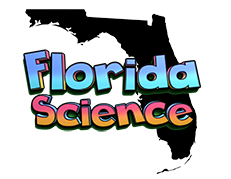SC.5.E.7.2 Water Reservoirs
SC.5.E.7.2: Recognize that the ocean is an integral part of the water cycle and is connected to all of Earth’s water reservoirs via evaporation and precipitation processes.
How does ocean water end up as freshwater rain?
Oceans contain 97% of all Earth’s water. Ocean water is salty: it contains 35 parts per thousand salt. That means that for every 1000 ml of water, there are 35 ml of salt. When rainwater falls, the water in that rain is fresh water. When water evaporates, only water evaporates. Salt is left behind in the ocean.
Since the oceans of the Earth cover 75% of the Earth’s total surface area, seen from space Earth is a “blue planet.” Floating above the Earth are clouds. Clouds carry water across the surface of the Earth. Water is moved from oceans to areas far inland by clouds to fall as precipitation. When rain, snow, sleet and hail fall on land, some of that water will return to the oceans. Rivers carry water that runs off land back to the oceans, where it is once again mixed with salt.
The cycle of evaporation, condensation, and precipitation moves water over the surface of the Earth. Most of Earth’s water is stored in the ocean. Something that holds water is called a reservoir. Oceans are the largest of Earth’s water reservoirs. Other reservoirs include ice: most of the freshwater on Earth is stored in ice in glaciers and in the polar icecaps. Another large reservoir of freshwater on Earth is the ground itself. Most of Florida gets its fresh water from the ground, either in springs or in wells. The largest water reservoir on earth is of course the oceans.



